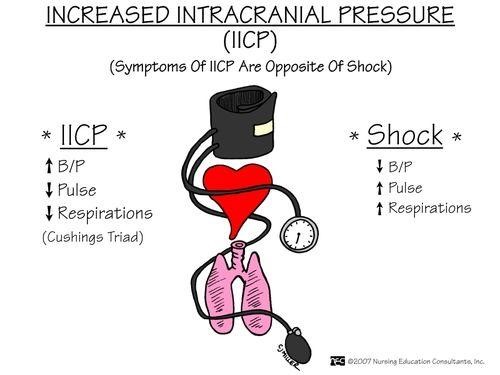A nurse is assessing an infant following a motor vehicle crash. Which of the following findings should the nurse monitor to identify increased Intracranial pressure?
Brisk pupillary reaction to light
Tachycardia
Increased sleeping
Depressed fontanelles
The Correct Answer is C

Nursing Test Bank
Naxlex Comprehensive Predictor Exams
Related Questions
Correct Answer is C
Explanation
A. Always infantize the child
Incorrect Explanation: "Infantizing" a child with a growth hormone deficiency is not a relevant or appropriate approach.
Explanation: Growth hormone deficiency is a medical condition that affects a child's growth. Treating the child as an infant could potentially have negative psychological and social effects. It's important to provide appropriate support and understanding without treating the child differently due to their medical condition.
B. Monitor for leukemia
Incorrect Explanation: Monitoring for leukemia is not directly related to growth hormone deficiency.
Explanation: Growth hormone deficiency primarily affects a child's growth and development due to inadequate production of growth hormone. While there might be certain health concerns associated with the condition, monitoring for leukemia is not a common aspect of managing growth hormone deficiency.
C. Help the parents set realistic goals based on the child's age and abilities
Correct Explanation: This is an important aspect to include in teaching.
Explanation: When a child is diagnosed with growth hormone deficiency, it's crucial for parents to set realistic expectations regarding their child's growth. Growth hormone therapy can help, but it's essential to understand that the child's growth might still differ from their peers. Setting realistic goals based on the child's age and abilities can help manage expectations and provide appropriate support.
D. This illness is only seen in males
Incorrect Explanation: Growth hormone deficiency is not limited to males.
Explanation: Growth hormone deficiency can affect individuals of any gender. It is not exclusive to males. The condition results from insufficient production of growth hormone by the pituitary gland, and it can occur in both males and females.
Correct Answer is B
Explanation
A. Maintain a saline-lock:
Maintaining a saline lock is important for potential intravenous access, but it is not the most urgent priority compared to actions that directly monitor the child's condition and help manage the disease.
B. Check the child's daily weight:
Monitoring daily weight is crucial in acute glomerulonephritis, as it helps assess fluid balance and detect early signs of fluid retention or worsening kidney function, which are key concerns in this condition. This makes it a priority action.
C. Place the child on a no-salt-added diet:
While dietary modifications can be important for managing various health conditions, including kidney issues, this is not the top priority in this situation. Reducing salt intake can help manage fluid retention, but it is not the nurse's priority action at this moment.
D. Educate the parents about potential complications:
Patient education is crucial, especially in chronic conditions, but in this acute care scenario, the nurse's immediate priority is to address the child's needs. Educating parents about potential complications should be done, but it's not the most immediate action.
Whether you are a student looking to ace your exams or a practicing nurse seeking to enhance your expertise , our nursing education contents will empower you with the confidence and competence to make a difference in the lives of patients and become a respected leader in the healthcare field.
Visit Naxlex, invest in your future and unlock endless possibilities with our unparalleled nursing education contents today
Report Wrong Answer on the Current Question
Do you disagree with the answer? If yes, what is your expected answer? Explain.
Kindly be descriptive with the issue you are facing.
